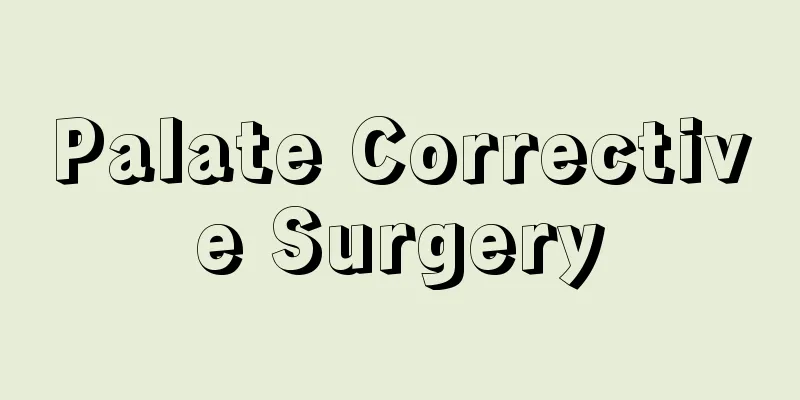Palate Corrective Surgery

|
Not everyone's oral development is perfect. Some people may have functional problems, or often do not pay attention and are unable to chew normally when eating. These all need to be corrected. If not corrected properly, it will have a greater impact on personal health. Regarding the corrective surgery for upper jaw correction, what is the process? Let me introduce it to you below. Surgical Procedure 1. Incision: Make a transverse incision in the maxillary vestibule groove. An incision was made in the maxillary region from the second molar on one side to the second molar on the other side at the inflection of the vestibule groove. Incise the mucosa and periosteum to the bone surface. 2. Expose the maxillary bone: Use a periosteal elevator to perform subperiosteal separation on the bone surface to expose the lateral wall of the maxilla and the root of the zygomatic ridge, and then separate posteriorly to the maxillary suture on the pterygoid plate. However, do not separate too much at the bottom (close to the gums) to maintain soft tissue attachment and ensure blood supply to the maxillary bone and maxillary teeth. After fully peeling off the lateral wall of the maxillary bone, use a small periosteal elevator to peel off the piriform aperture, the lower part of the nasal septum, the nasal floor, and the lateral wall of the nose along the nasal floor. 3. Osteotomy of the lateral and medial walls of the maxilla: According to the marked osteotomy line, use a micro saw to cut off the lateral wall of the maxilla, cut off the anterior and lateral walls from the anterior maxillary part outside the piriform aperture to both sides, and then use a bone knife to gently chisel off the medial wall of the maxillary sinus. Use a osteotome to cut off the root of the nasal septum. When chiseling, be careful not to tilt the osteotome upward, and place the index finger on the soft palate to protect the osteotome from chiseling through. 4. Chisel off the posterior edge of the maxillary bone: Finally, at the pterygomaxillary suture, between the posterior side of the maxillary tuberosity and the lower end of the pterygoid plate, use an arc-shaped sharp bone knife to chisel inward to separate the maxillary bone from the pterygoid plate. You can often place the index or middle finger of your left hand on the palatal mucosa near the pterygoid hook at the posterior edge of the hard palate to feel the osteotomy. When chiseling the bone, special attention should be paid: the bone knife should be placed at the lower part of the pterygomaxillary suture, and the direction of chiseling should be inward and forward as much as possible. Do not chisel the bone knife in an upward direction to avoid damaging the blood vessels in the pterygomaxillary suture (such as the internal maxillary artery). 5. Break the maxilla downwards: After completing each osteotomy step, gradually apply downward pressure on the front part of the maxilla with the thumb to break the entire maxilla downwards, and hold the broken maxilla in hand to allow it to move fully. Move the maxilla forward to fit the occlusal relationship of the occlusal guide and achieve the desired ideal position. The maxillary bone is fixed between the jaws using pre-ligated dental arch splints to maintain the ideal position of the maxillary bone. Postoperative Care 1. Try to avoid getting the surgical area wet within 7 days after surgery. 2. Ensure the surgical site is clean to prevent infection. If there is blood scab or secretion on the wound, wipe it with sterile saline. 3. After the operation, you can apply pressure to the local wound or use an ice pack for cold compress, but the pressure should not be too high. If continuous bleeding or severe hematoma occurs after surgery, you should go to the hospital for follow-up consultation in time. 4. You should rest in a quiet and comfortable environment after the operation. 5. There will be pain in the wound on the day of surgery, but the pain will gradually subside over time. Patients should not rush to take painkillers, because aspirin-like drugs will aggravate wound bleeding. 6. Avoid eating irritating foods, such as chili peppers. 7. Strictly follow the doctor’s instructions on taking medication and going for follow-up visits. |
Recommend
The threat of cancer is terrifying. What foods can prevent and fight cancer?
Cancer is a terrible factor that threatens people...
Nine manifestations of dehydration
Dark yellow urine and constipation are often cons...
What are the reactions after liver cancer interventional surgery
What reactions will occur after interventional su...
Common misunderstandings in the treatment of cervical cancer
What are the misconceptions about the treatment o...
What causes skin depigmentation
People's skin has a certain color. Some peopl...
How long does kidney stone pain last
There are many reasons for the formation of kidne...
What should I do if nasopharyngeal carcinoma metastasizes to the lungs? What should I pay attention to in my diet?
Nasopharyngeal carcinoma is a common tumor diseas...
How to use a coconut opener
A coconut opener is specially used to open coconu...
How can boys make their hair grow faster
Some boys are very distressed. After cutting thei...
Can I get pregnant if I have sex 18 days after an abortion?
Women who have had an abortion want to resume the...
What is the function of propyl methylcellulose?
Hydroxypropyl methylcellulose is a white powder. ...
What are the typical symptoms of fibroids
I believe that many people do not know the sympto...
Is grapefruit cold?
Every winter, you will see all kinds of grapefrui...
Excessive salt intake is the primary cause of stomach cancer
Recently, relevant medical experts have discovere...
How to get rid of acne scars on the back
Acne may not be unfamiliar to everyone. Most peop...









